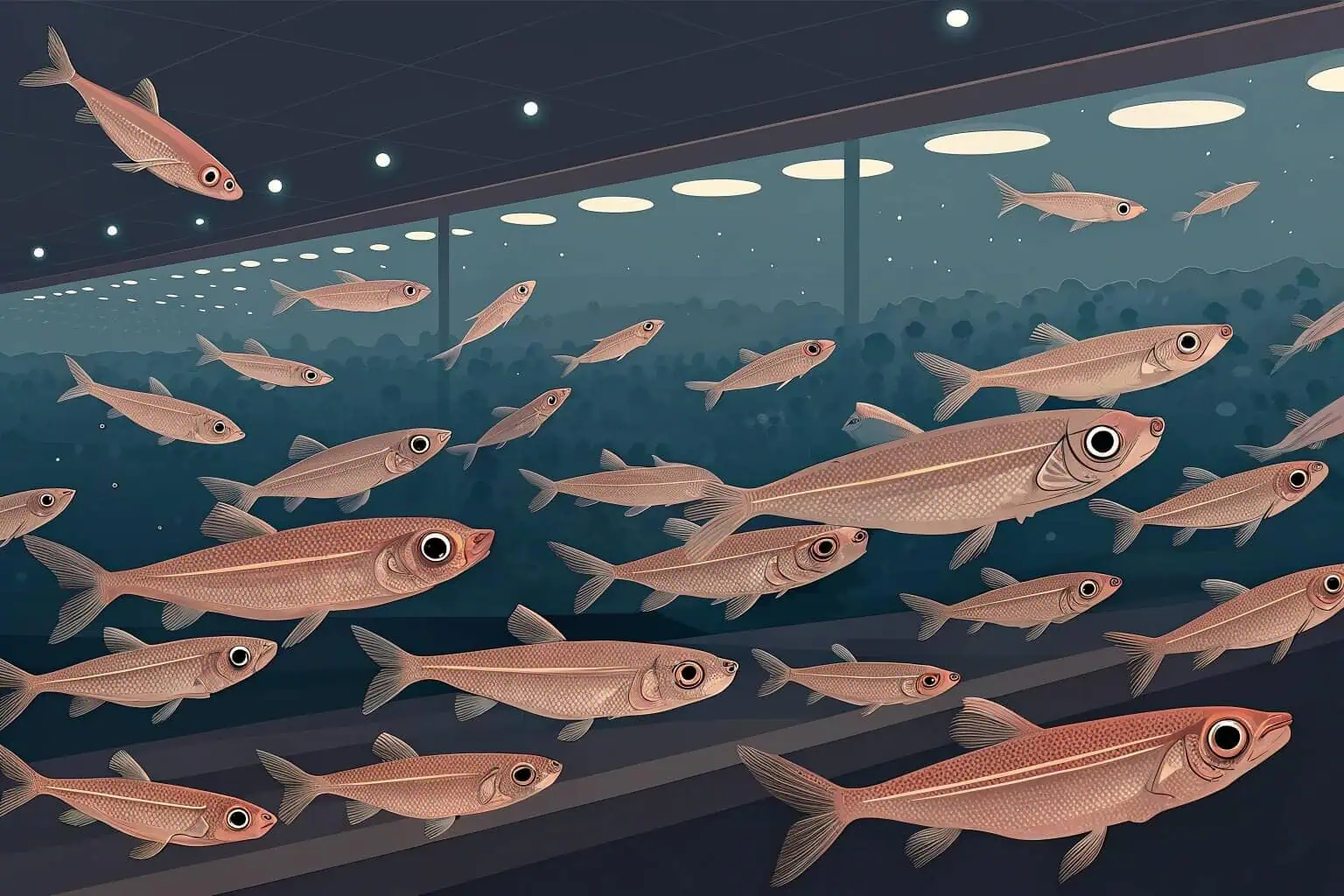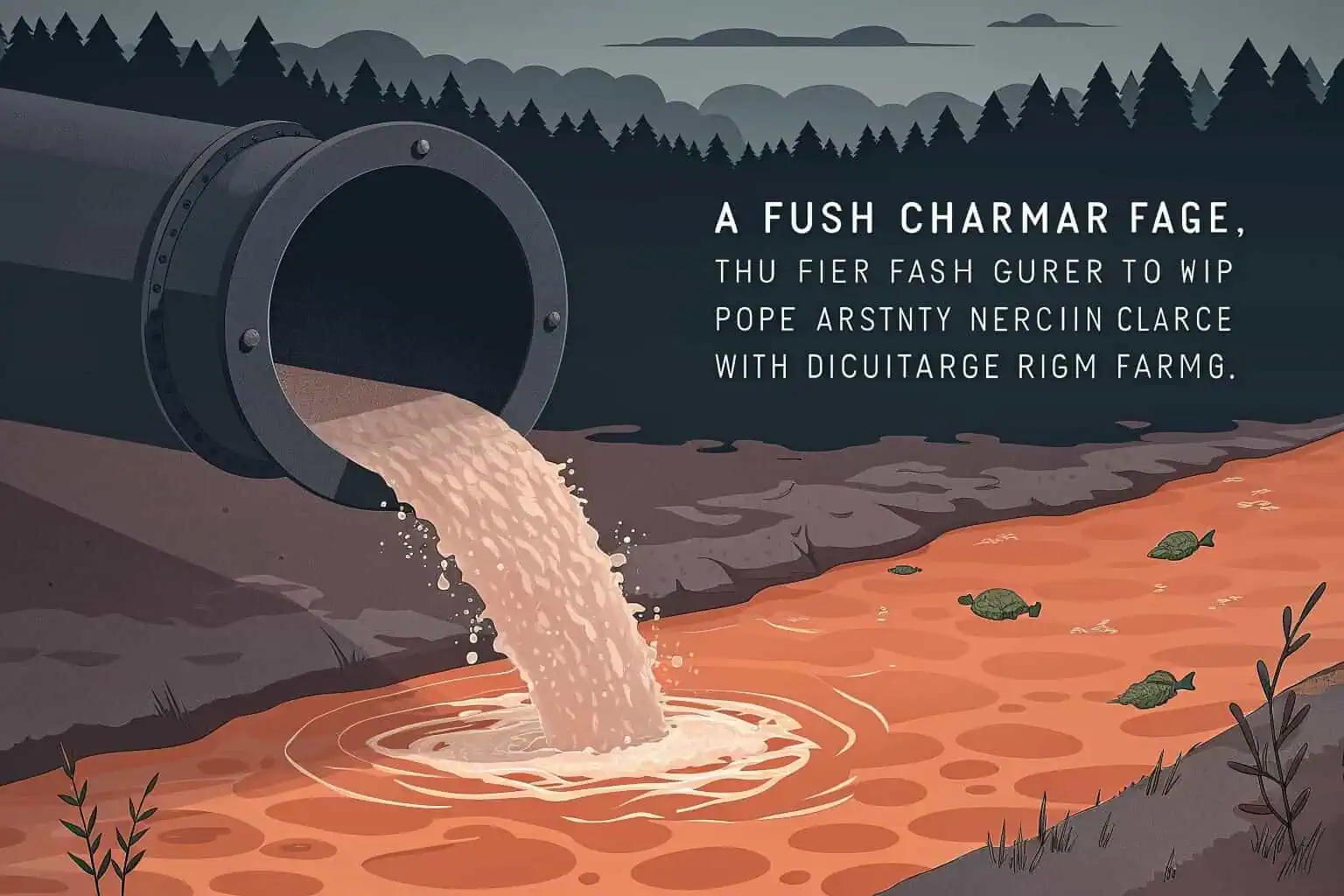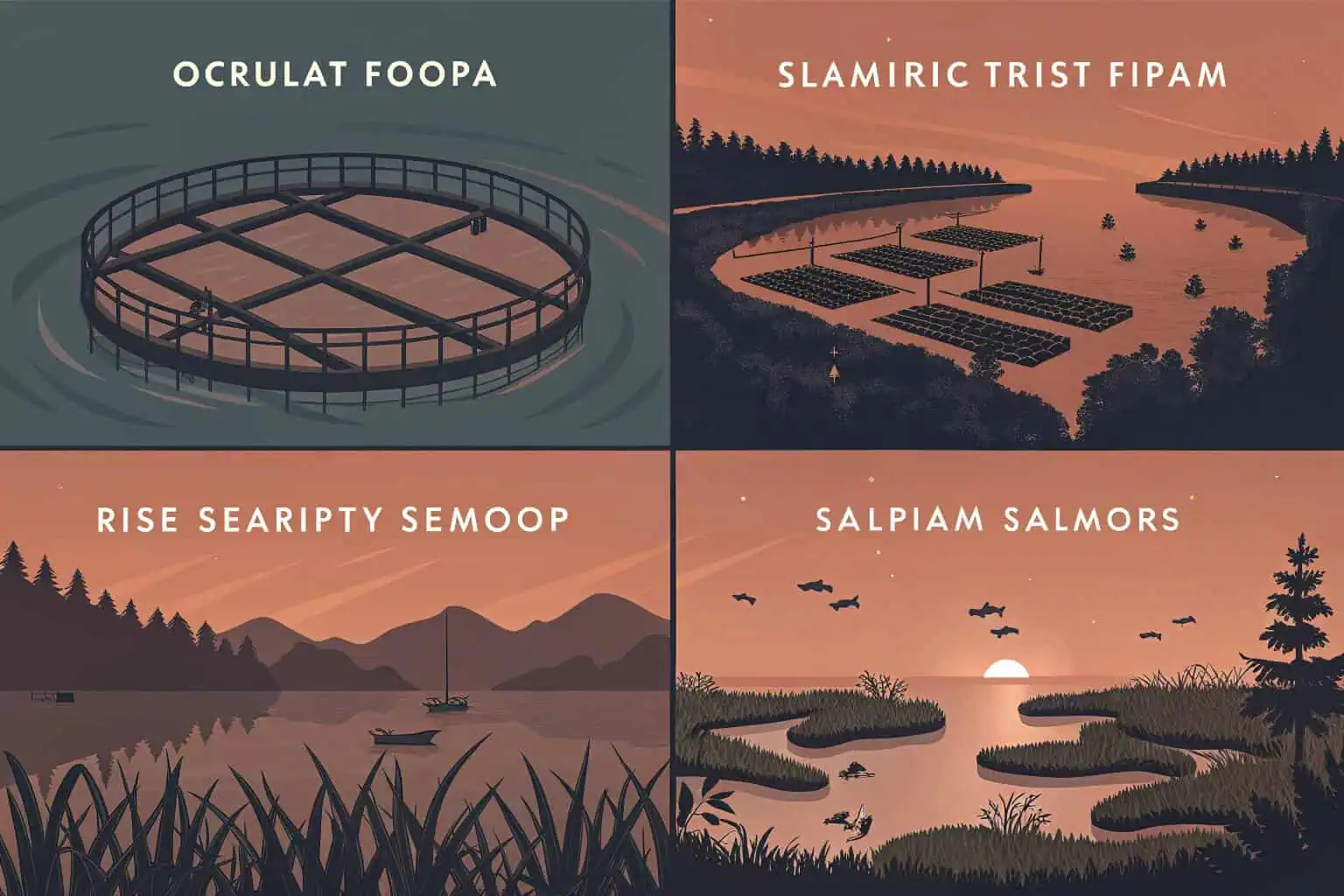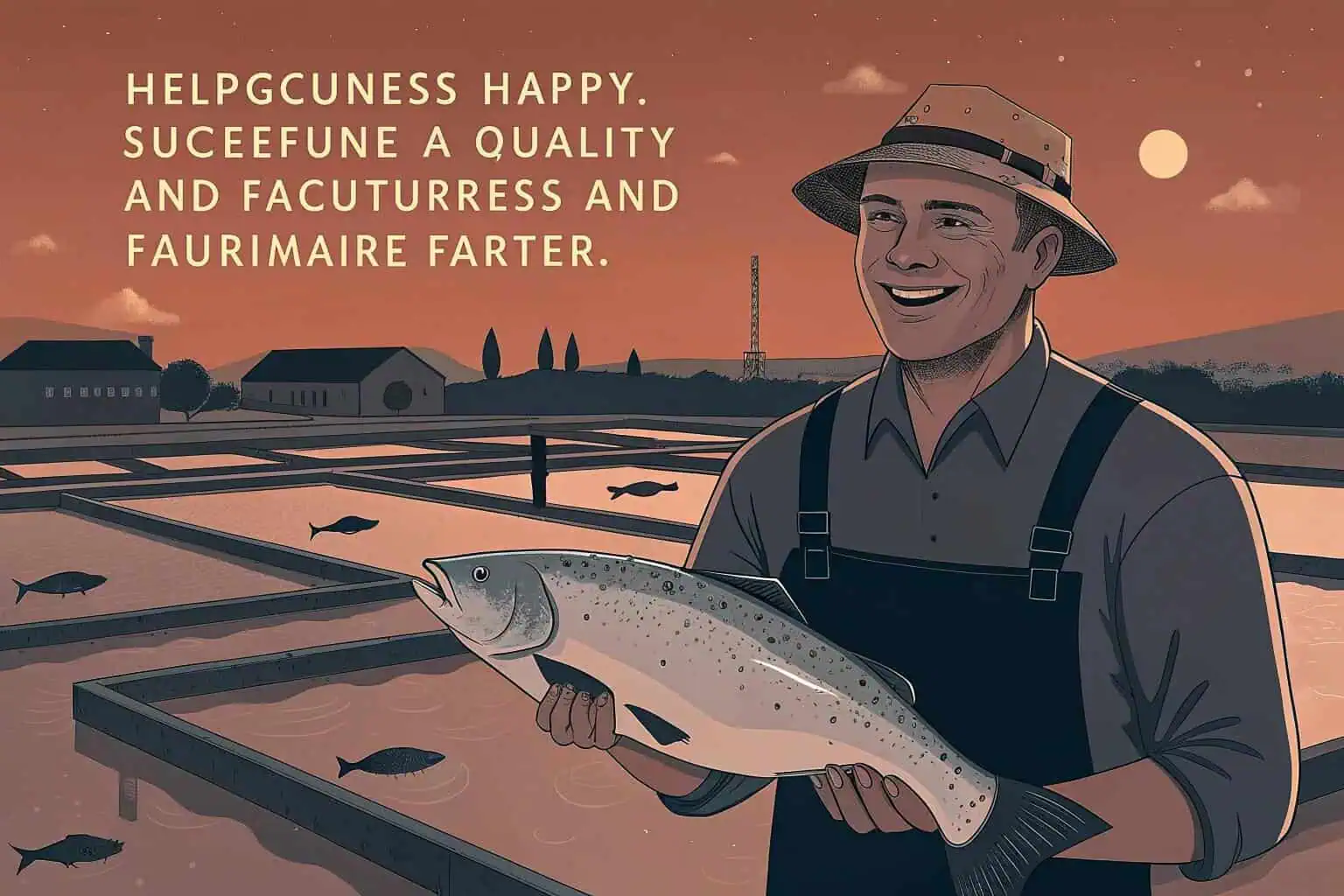How does aqua farming work?
Struggling to understand how we get so much seafood? Traditional fishing can't keep up. Aquaculture offers a sustainable solution to feed our growing world.
Aquaculture, or aqua farming, is the controlled cultivation of aquatic organisms like fish, shellfish, and seaweed. It involves managing the entire lifecycle, from breeding to harvesting, in controlled environments to produce seafood efficiently and reliably.

From the outside, it might seem simple. You just put fish in water, right? But I've spent years in this industry, and I can tell you there's much more to it. The process is a delicate balance of science and nature. Let's dive into how it all works.
How does aquafarming work?
Curious about the journey from a tiny egg to your dinner plate? The process can seem complex. Here’s a simple breakdown of how modern fish farming operates.
Aquafarming works by raising aquatic species in controlled settings. The process starts with breeding and hatching the young. They are then moved to grow-out systems, fed a specific diet, and monitored for health until they are ready for harvesting.

As an observer in the aquaculture industry, I see it as a form of sustainable agriculture1. It’s a hands-on job that requires precision and constant attention. This controlled approach allows us to produce food more efficiently than relying on wild catch alone.
The Daily Life of a Fish Farmer
My first step is always site selection and preparing the right container, like a pond or tank. I make sure the water quality2 is perfect before introducing the young fish or shrimp, called fry or fingerlings. From there, it's a constant process of monitoring. I check the water temperature, oxygen levels, and pH every day. I also manage their feeding schedule3 carefully to make sure they grow healthy and strong. It’s a cycle of care that ensures the final product is high quality.
From Hatchery to Harvest
The journey from a small fry to a market-sized fish involves several key stages. It begins with stocking a healthy population4, followed by a dedicated period of growth and feeding. Throughout this time, health and water quality are my top priorities. Finally, the process concludes with a careful harvest to bring a healthy, high-quality product to market.
| Stage | My Primary Focus | Goal |
|---|---|---|
| Site & System Setup5 | Choose a location and install ponds or tanks. | Create a stable and safe environment. |
| Stocking | Introduce healthy fry or fingerlings. | Start the growth cycle with a strong foundation. |
| Monitoring & Feeding | Check water quality and provide balanced nutrition. | Ensure optimal growth and prevent stress. |
| Harvesting | Collect the market-sized fish or shellfish. | Bring a healthy, high-quality product to market. |
What is the biggest problem in aquaculture?
Is fish farming truly sustainable? Many farms face issues that can harm the environment. The biggest challenge threatens both nature and the farm's own survival.
The biggest problem in aquaculture is its environmental impact. This includes water pollution from waste, the spread of diseases in dense populations, and the reliance on wild-caught fish for feed, which can deplete natural ocean resources.

In my experience, sustainability is the most critical issue we face. These are serious problems, but I believe we can solve them with innovation and better practices6.
The Environmental Footprint
When you have a lot of fish in one place, their waste can build up. This waste releases nutrients that can pollute the surrounding water, leading to algae blooms7 that harm local ecosystems. Disease is another huge risk. Because the fish are raised in high densities, a single outbreak can spread like wildfire, which is something I've unfortunately seen happen. It's a constant battle to keep the population healthy. Another challenge is our reliance on wild fish for feed. Many farmed species are carnivorous, so we have to catch smaller fish from the ocean to feed them. This puts more pressure on wild fish stocks.
Innovations for a Greener Future
To tackle these challenges, I focus on smart solutions. Using bio-filters helps manage waste and maintain clean water. I also keep stocking densities at a safe level to prevent disease and avoid the need for antibiotics. For feed, I am always looking for sustainable alternatives to reduce our reliance on wild-caught fish.
| Challenge | My Approach to a Solution | Desired Outcome |
|---|---|---|
| Water Pollution | Use bio-filters8 and manage waste responsibly. | Maintain clean water and protect local ecosystems. |
| Disease Outbreaks9 | Lower stocking densities and avoid antibiotics. | Keep fish healthy and reduce chemical use. |
| Feed Sustainability | Use alternative protein sources10 like algae or insects. | Reduce pressure on wild fish populations. |
What are the 4 types of aquaculture?
Think all fish farms are just simple ponds? There's a surprising variety of systems out there. Each type has unique benefits for different species and locations.
The four main types of aquaculture are freshwater, saltwater (mariculture), brackish water, and integrated systems. Each one operates in a different environment and is suited for specific types of aquatic life, from tilapia in ponds to shrimp in estuaries.

I've worked with all four major types, and each has its own place in the industry. The choice depends on the local environment and the species11 you want to raise.
A Look at Different Farming Methods
Freshwater aquaculture12 is the most common. I've seen many farms use inland ponds to raise fish like tilapia and catfish. Saltwater aquaculture, or mariculture13, happens in the ocean. This usually involves large net pens or cages in coastal areas to farm marine species like salmon. Then there's brackish water aquaculture. This type is set up in estuaries where freshwater from rivers mixes with saltwater from the ocean, a perfect environment for farming shrimp. Finally, there's integrated aquaculture, which I find very clever. It combines fish farming with other types of agriculture, like growing rice. The fish live in the rice paddies, and their waste fertilizes the plants.
Choosing the Right System for You
Each system has its pros and cons. Freshwater ponds14 are great for landlocked areas, while saltwater systems use existing water bodies for large-scale farming. Brackish water15 is ideal for high-value shellfish, and integrated systems are a smart way to maximize land use. The best choice depends on your goals and resources.
| System Type | Environment | Common Species | My Takeaway |
|---|---|---|---|
| Freshwater | Inland ponds, rivers, lakes | Tilapia, Catfish, Carp | Great for landlocked areas, very common. |
| Saltwater | Coastal oceans, open seas | Salmon, Tuna, Sea Bass | Uses existing water bodies for large-scale farming. |
| Brackish Water | Estuaries, coastal ponds | Shrimp, Prawns, Mussels | Ideal for high-value shellfish production. |
| Integrated | Combined with crop farming | Carp, Tilapia (in rice paddies) | A smart way to maximize land and resource use. |
Can you make money in aquaculture?
Dreaming of starting your own fish farm? It certainly seems like a profitable venture. But success requires careful planning and a deep understanding of the market.
Yes, you can make money in aquaculture, especially with high-value species and efficient management. Profitability depends on your scale and market. A small farm can earn tens of thousands annually, while large operations can achieve million-dollar revenues.

I firmly believe that aquaculture16 can be very profitable if you approach it as a serious business. Success depends on your strategy and willingness to innovate.
The Business of Fish Farming
Large-scale operations that export high-value products17 like salmon or shrimp can generate millions in revenue. But you don't have to be a huge corporation to succeed. I've seen small, local farms become very profitable18 by selling organic or niche products directly to consumers, earning a solid income each year. The key is managing your costs and understanding your market. Innovation is also crucial. I always look for ways to improve efficiency.
Keys to a Profitable Farm
To succeed, you need to focus on a few key areas. The scale of your operation matters, as larger farms often have lower costs per unit. Your choice of species is also critical, as high-value species can bring in more money. Adopting technology, like the durable, collapsible fish tanks from Bancy, can boost efficiency and help you scale quickly. Finally, having good access to your market is essential for getting the best price for your product.
| Factor | How It Impacts Profit | My Strategy |
|---|---|---|
| Scale of Operation | Larger farms benefit from economies of scale. | Start with a manageable size and expand smartly. |
| Species Choice19 | High-value species offer higher revenue potential. | Choose a species that fits my climate and market. |
| Technology Adoption20 | Innovations like RAS or quality tanks boost efficiency. | Invest in reliable equipment to lower long-term costs. |
| Market Access | Direct-to-consumer or export channels affect price. | Build strong relationships with buyers and distributors. |
Conclusion
Aquaculture is a vital and growing industry for global food security. While it faces environmental challenges, sustainable innovations are paving the way for a profitable and responsible future.
-
Exploring this link will provide insights into how sustainable practices enhance food production and environmental health. ↩
-
Understanding water quality management is crucial for healthy fish and shrimp growth, ensuring a successful aquaculture operation. ↩
-
A well-planned feeding schedule is essential for optimal growth and health of aquatic species, making it a key resource for aquaculture enthusiasts. ↩
-
Understanding the importance of a healthy population can enhance your aquaculture practices and yield better results. ↩
-
Explore this resource to learn how to create a stable, safe environment for aquaculture success. ↩
-
Discover how innovative approaches can enhance sustainability initiatives and lead to more effective solutions. ↩
-
Understanding algae blooms can help you learn how to prevent water pollution and protect aquatic life. ↩
-
Explore this resource to find effective bio-filters that can help maintain clean water and protect ecosystems. ↩
-
Explore proven methods to keep fish healthy and reduce chemical use, ensuring sustainable aquaculture practices. ↩
-
Learn about sustainable options like algae or insects to reduce pressure on wild fish populations. ↩
-
Explore how local environmental factors affect species choice for better industry outcomes. ↩
-
Explore this resource to learn effective techniques and improve your freshwater fish farming operations. ↩
-
Discover the latest methods and benefits of saltwater aquaculture to enhance your marine farming knowledge. ↩
-
Explore this resource to understand why freshwater ponds are ideal for landlocked areas and common fish farming. ↩
-
Learn how brackish water systems are perfect for cultivating high-value shellfish like shrimp and mussels. ↩
-
Explore this resource to learn proven strategies and innovations that can make your aquaculture business highly profitable. ↩
-
Explore this link to learn proven strategies for successfully exporting high-value seafood and maximizing revenue. ↩
-
Discover effective methods for small farms to boost profits by selling organic or niche products directly to consumers. ↩
-
Explore this resource to learn how to select the most suitable and profitable species for your aquaculture operation. ↩
-
Exploring innovative technology options can significantly boost your farm's productivity and scalability. ↩